#Inostrancevia alexandri
Text
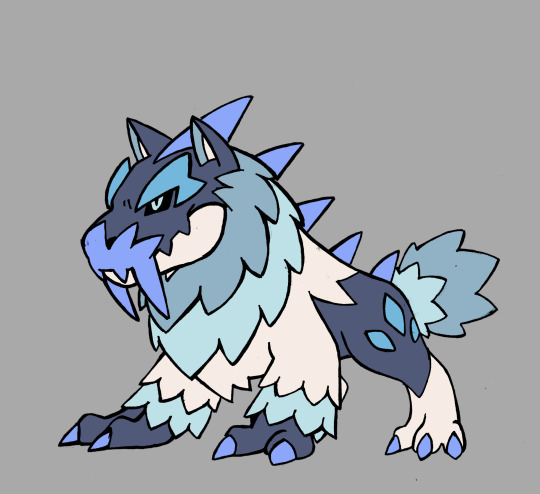
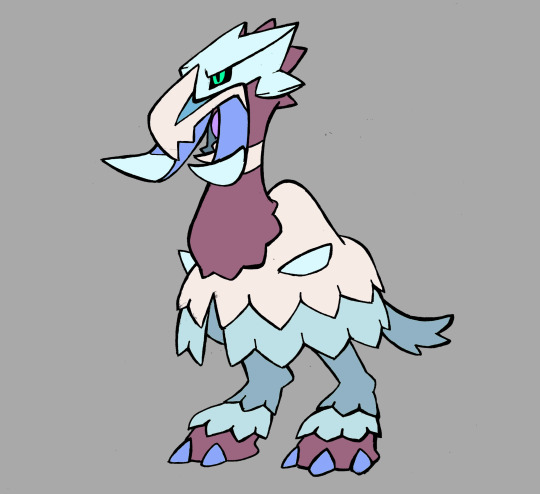
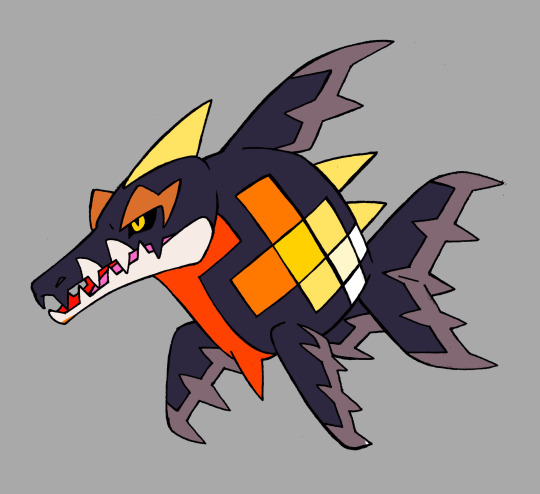
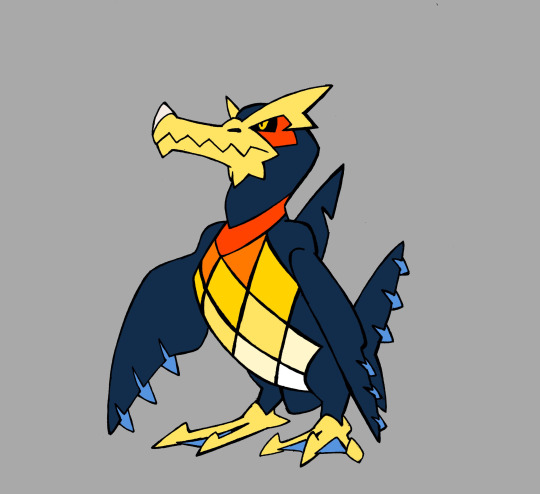
The Hybrid Fossils
This "fossils" pokemon are not revived from bones, but rather they are cloned from prehistoric blood samples, recovered from another fossil pokemon
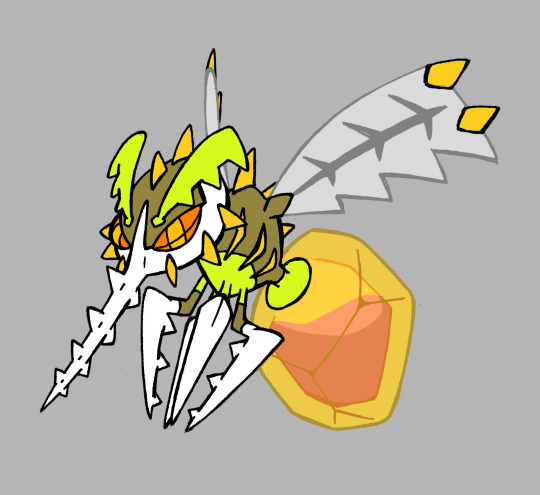
This ancient Bug/Rock pokemon can be found and revived, to extract blood samples with which you can re-create the ancient pokemons, however, the blood samples recovered from the mosquito are usually deteriorated and to create a complete DNA sequence you will need to mix 2 samples. There are 4 diferente Blood samples: Mammal (Ice), Reptile (dragon), Bird (Rock) and Fish (Water)
Mammal/Reptile becomes Ice/Dragon, it is based on the inostrancevia alexandri the largest species of Gorgonopsid

Mammal/Bird becomes Ice/Rock, it is based on the Aepyornis maximus known as the "Elephant Bird", the largest terrestrial bird that ever existed
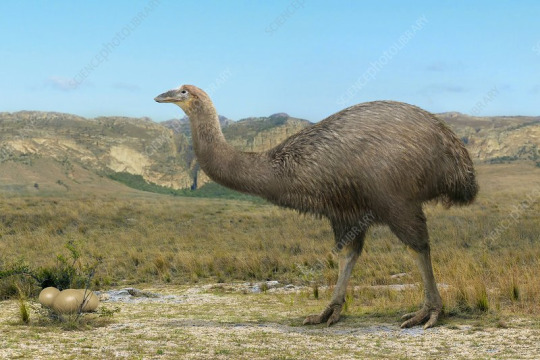
Fish/Reptile becomes Water/Dragon, it is basd on the shastasaurus sikanniensis, the largestest species of Ichtyosaurus
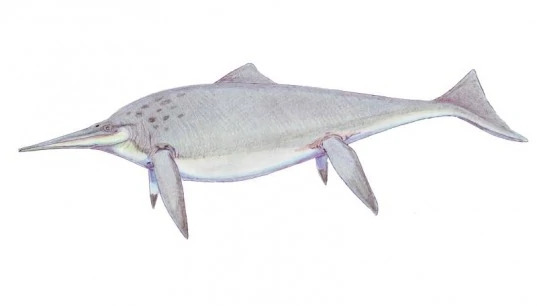
Fish/Bird becomes Water/Rock, it is based on the Palaeeudyptes klekowskii, the largest penguin to ever live
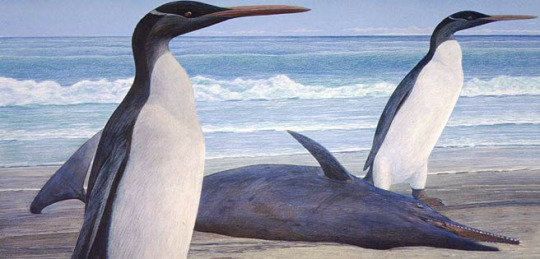
The man in charge of this experiment of prehistoric splicing is Professor Marrow, an expert on "Paleogenetic" and the one who discovered the whole process

Professor Marrow is based on a mix of John Hammond from "Jurassic Park" and Dr. Moreau from "The island of Dr. Moreau"
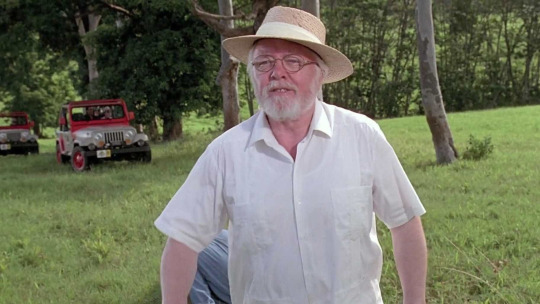
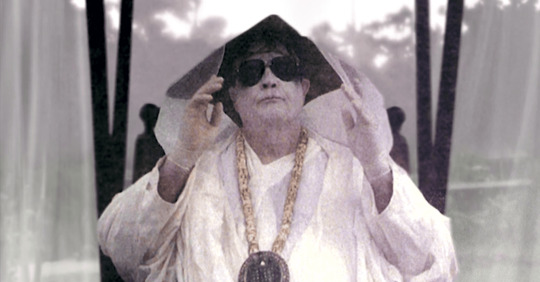
#Pokemon#fakemon#fake pokemon#prehistoric fakemon#fossils#fossil fakemon#amber#mutants#hybrid#pokemon professor#megafauna#dragon pokemon#dragon type#dragon fakemon#ice pokemon#ice type#ice fakemon#water pokemon#water type#water fakemon#rock type#rock pokemon#rock fakemon#bug pokemon#bug fakemon#bug type
7K notes
·
View notes
Text
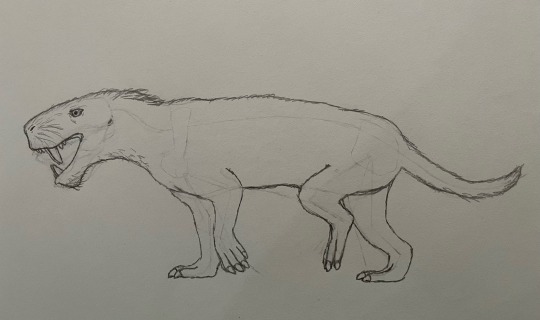
Inostrancevia alexandri was a gorgonopsid, a group of mostly large, predatory stem-mammals, from the Permian of western Russia. It was the largest member of the group, and undoubtedly an apex predator in its ecosystem. Its jaws sported disproportionately large canine teeth, a trait that would continue to show up in later synapsids like the famous sabertooth cats and other lineages.
105 notes
·
View notes
Photo




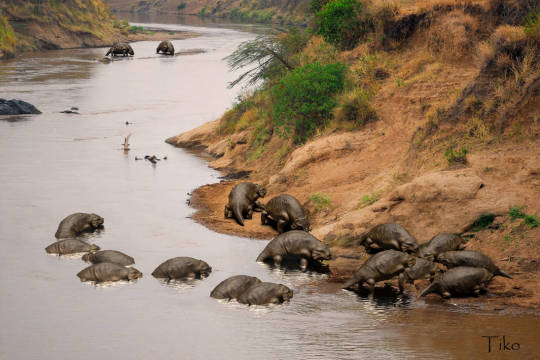

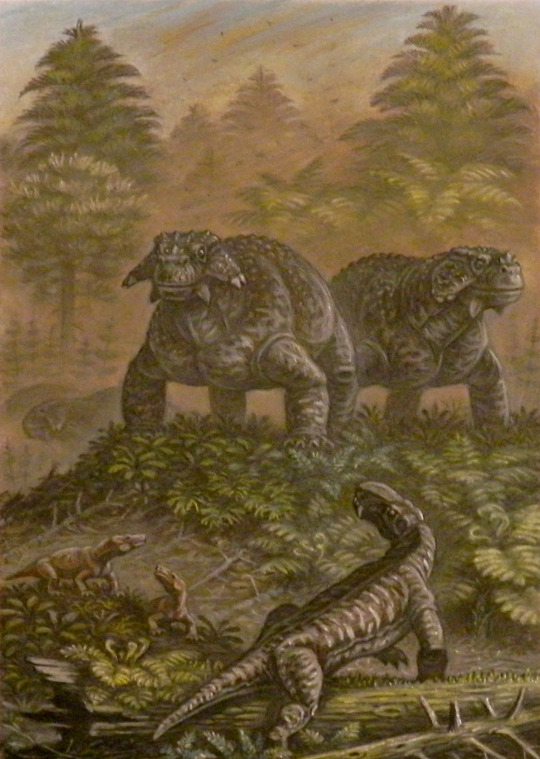
Scutosaurus is an extinct genus of pareiasaur anapsid parareptile which lived throughout what is now Russia from the Guadalupian to the Lopingian epochs of the Permian period some 264- 251 mya. The first fossils of Scutosaurus were uncovered by Russian paleontologist Vladimir Prokhorovich Amalitskii and his wife Anne in the Upper Permian sediments in the Northern Dvina River, Arkhangelsk District, Northern European Russia. From 1899 to 1914 the pair would excavate numerous nearly complete articulated skeletons of numerous species. However because of WW1 they wouldn't be officially described until 1917 by British zoologist David Meredith Seares Watson, who dubbed the animal "Pariasaurus Karpinskyi-Amalitz" (giving credit to the Amalitskiis for there work). In 1930, Soviet paleontologist Aleksandra Paulinovna Anna Hartmann-Weinberg found the pareiasaur material from North Dvina represented only 1 species, and that this species was distinct enough from other Pareiasaurus to justify placing it in the new genus Scutosaurus, with the species name of karpinskii. Since then numerous additional remains including 6 fairly complete skeletons have been recovered making Scutosaurus the most completely known pareiasaur. Reaching some 8-10ft (2.5-3m) in length, 1,700 – 2,600lbs (770- 1180kg) in weight Scutosaurus were amongst the largest land animals not only during the Permian but the Paleozoic as a whole. Like other pareiasaurs it sported a short stout body, and a short tail. Unlike other pareiasaurs, Scutosaurus’s leg orientation was more under the body as opposed to out to the side. This gave it a much taller stance and more freedom of movement. Scutosaurus had a heavy frame of bones supported by a network of powerful muscles. This in turn was covered by a tough hide that was covered with osteoderms for enhanced armor, providing it with its best defense as it was not an animal built for speed. Scutosaurus had exceptional hearing and may have been able to bellow loudly to call others of its species. In life scutosaurus would have likely traveled small herds as they search and fed upon any vegetation they could find in the vast global deserts of the time.
Art Belongs to the Following Creators:
EmilySteppe: https://www.deviantart.com/emilystepp/art/Epoch-Paleozoic-Reptiles-832530574
Mark Witton :https://twitter.com/MarkWitton/status/878183023782625280/photo/1
Joschua Knuppe: https://twitter.com/JoschuaKnuppe/status/1406251893907668998
Abelov2014: https://www.deviantart.com/abelov2014/art/Scutosaurus-karpinskii-Inostrancevia-alexandri-526709832
Ntvtiko: https://www.deviantart.com/ntvtiko/art/Scutosaurus-Karpinsky-675792421
Pelycosaur24: https://www.deviantart.com/pelycosaur24/art/Vladimir-and-Anna-Amalizky-and-their-Scutosaurus-825605510
16 notes
·
View notes
Text
Hello my children today I bring to you the different gorgonops species. Praise be to the father of the fang.
Now repeat after me.
Scylacognathus
Scylacognathus grimbeeki,
Scylacognathus major
Scylacognathus parvus
Scylacognathus robustus
Paragalerhinus
Paragalerhinus rubidgei.
Aelurognathus
Aelurognathus parringtoni.
Aelurognathus tigriceps.
Aelurognathus ferox.
Aelurosaurus
Aelurosaurus whaitsi.
Aelurosaurus felinus.
Aelurosaurus wilmanae.
Aloposaurus
A. gracilis
Arctognathus
The recognized A. curvimola A. breviceps and the unrecognized A. cookei and A. nasuta.
Arctops
Arctops ferox.
Broomisaurus
Broomisaurus planiceps.
Broomisaurus rubidgei.
Clelandina
Clelandina laticeps.
Clelandina rubigei.
Cyonosaurus
Cyonosaurus longiceps.
Cyonosaurus kitchingi
Cyonosaurus broomianus
Cyonosaurus rubidgei
Cyonosaurus tenuirostris
Dinogorgon
Dinogorgon rubidgei
Eoarctops
Eoarctops sp.
Eoarctops vanderbyli.
Leontocephalus
Leontocephalus rubidgei.
Leontocephalus intactus.
Lycaenops
Lycaenops kingwilli.
Lycaenops angusticeps.
Lycaenops ornatus.
Sycosaurus
Sycosaurus brodiei.
Sycosaurus intactus.
Sycosaurus vanderhorsti.
Sycosaurus kingoriensis.
Sycosaurus laticeps.
Galesuchus
Viatkogorgon
Viatkogorgon ivakhnenkoi
Inostrancevia
Inostrancevia alexandrI
Inostrancevia latifrons
Inostrancevia uralensis
Pravoslavlevia
Pravoslavlevia parva
Broomicephalus
Prorubidgea
Prorubidgea robusta.
Prorubidgea maccabei.
Rubidge
Rubidgea atrox.
Scylacops
Scylacops bigendens.
Scylacops capensis.
Sauroctonus
Sauroctonus progressus
Sauroctonus parringtoni
Sauroctonus
Gorgonops torvus
Gorgonops whaitsi
Gorgonops longifrons
Gorgonops eupachygnathus
Gorgonops dixeyi
And Gorgonops kaiseri.
Amen, praise the fanged one my children go out and feast.
4 notes
·
View notes
Note
This is one-weird-mammal-a-day, I LOVE your character! So perfect! I’d love to see your leopard seal and gorgonopsid, those are some of my favorites! My header image is one c:
omg thank you so much🥺 i love weird mammals so much. your blog always makes my day
this is kali, my sea leopard/otter/crocodilian/polar bear thing.

she’s still got functional legs and paws but she’s not exactly graceful on solid ground, lol. she’s also almost twelve feet long even without her croc rudder-tail!

this is tyson, my inostrancevia alexandri! i tried to model his coloring off of a golden tiger morph, but i made the oranges too bright here :/ i’ll probably do a better one soon. he’s about the same size as kali but much, much faster on his feet.
#tyson does NOT pass the harkness test he is mentally a very smart dog#kali does though. she can talk she just really doesnt want to talk to anyone#oc kali#oc tyson
7 notes
·
View notes
Text
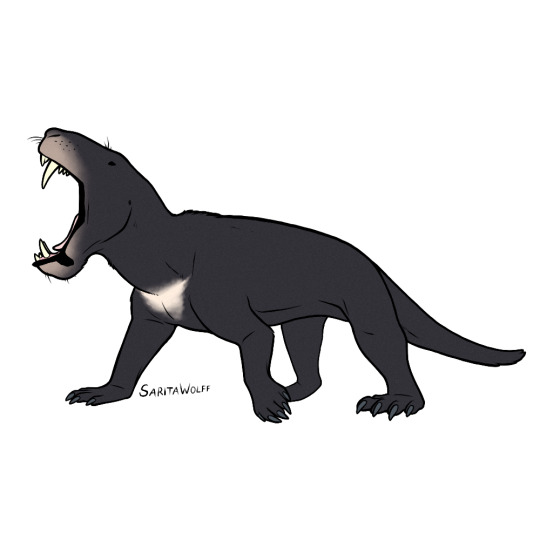
Gorgonopsids were cat-like, saber-toothed synapsids from the late Permian, and Inostrancevia were the largest of them.
Here I’ve drawn the Russian Inostrancevia alexandri, which was about as large as a grizzly bear and no doubt the apex predator of its environment. Gorgonopsids had very flexible jaws, and could have opened their mouths at a 90° angle if necessary.
24 notes
·
View notes
Photo

This was supposed to be a quick study, but turned out to be anything but. But at least I'm very happy with the colours. In the first version I added the ear in the wrong place, and someone on twitter kindly pointed this out, so that's corrected version. It's Inostrancevia alexandri, because I guess it was time for another version of one of those.
#synapsida#synapsids#inostrancevia alexandri#palaeoblr#paleoart#palaeoart#permian#gorgonopsia#therapsida#sciart
78 notes
·
View notes
Photo



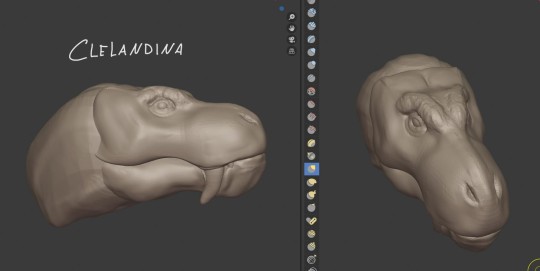
Permian themed speed sculpts
A bit more than a week I have been doing daily speed sculpt sessions, each limited to 35 minutes and with references at my hand. I took a bit of a break from dinosaurs and sculpted these (and some humble attempts of human torsos) in Blender.
#Inostrancevia#Inostrancevia alexandri#Titanophoneus#Titanophoneus potens#Estemmenosuchus#Estemmenosuchus mirabilis#Clelandina#Clelandina rubidgei#gorgonopsid#gorgonopsia#dinocephalian#therapsida#synapsida#permian#blender3d#blender#sculpting#speedsculpt#practice#exercise#animalart#digitalart#3d art#paleoart#myart
62 notes
·
View notes
Photo

“I WILL EAT YOUR BABIES!” Was the title of this painting and I had tons of fun!
If you appreciate my art and want to support me, please consider pledging to my patreon! The lowest tier reward is $2 and the highest is only $10!
#Inostrancevia alexandri#Gorgonopsids#Mammal-like-reptile#mammal like reptile#prehistoric#paleontology#Paleoart#paleoartist#flails#painting#speed painting#DES#Dante Saunders#Art Of The Beast#artist of tumblr#artist on tumblr#my art#OC#Sand stone#Patreon
9 notes
·
View notes
Photo

something I've been working on the past few days, I forgot the species I had originally intended to make, but the skeleton I pulled up ended up being of Inostrancevia alexandri, which are part of the family Gorgonopsidae. I used a mixture of other artist rendition, Sphynx cats, naked mole rats, and rats as inspiration, I wanted to give them that thing that some cats 'n dogs have with the black lips. It's hard to see here without any color but my rendition does have fur. I'm not sure if I'll paint her
0 notes
Text


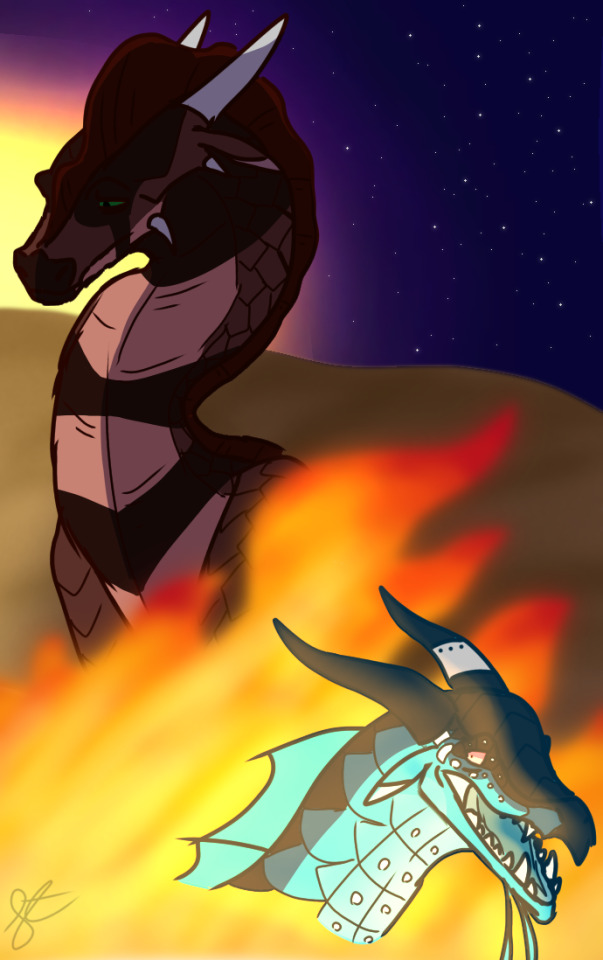
(f)art ft. some of my dragons and Inostrancevia alexandri
Yes the first one is a Spamton dragon. He’s fun to draw I may do more of him
#wings of fire#inostrancevia#paleoart#kind of#spamton#spamton dragon#oops lmao#wings of fire oc#my art
5 notes
·
View notes
Photo

The Tower. Art by Kmonvish Lawan, from Arcana Saurus.
Inostrancevia alexandri
The Tower is like natural disaster of the Tarot, and what comes to my mind is the worst natural disaster that ever happened in the history of life: the End Permian Mass Extinction. 90% of animals went extinct, and it changed the world forever.
22 notes
·
View notes
Photo
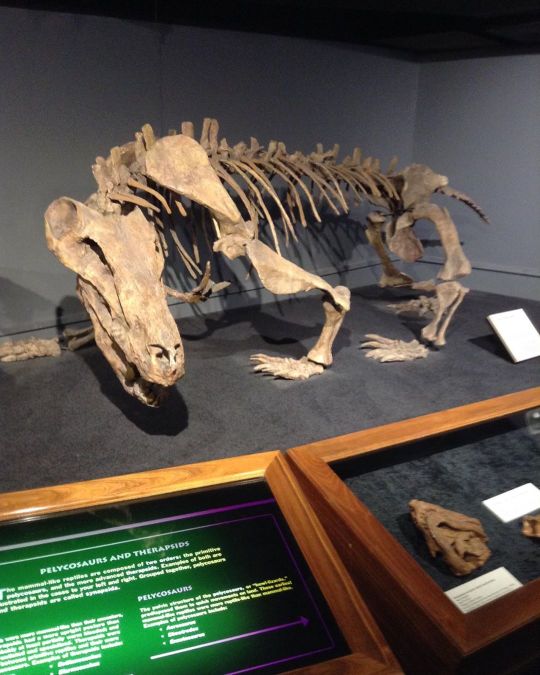
Inostrancevia alexandri, a kind of extinct Permian gorgonopsid (a gorgonopsid being itself a part of the group Synapsida, which is a group which contains both reptiles and mammals) @azmnh. That's right, folks. We're also synapsids, and no, this animal is not a dinosaur. It's sometimes been simplified and called a reptile-like mammal (something that used to be phrased "mammal-like reptile). Isn't it gorgeous? Look at those sabers! That skull! Those teeth! Wow! #Science #Scicomm #Paleontology #Fossil #Fossils #Gorgonopsid #Synapsid #NotaDinosaur #Reptiles #Mammals #ArizonaMuseumofNaturalHistory #Biology #Zoology #Animal #Animals #Geology #Evolution https://www.instagram.com/p/B_KAagmhSxy/?igshid=11jw4crks77dc
#science#scicomm#paleontology#fossil#fossils#gorgonopsid#synapsid#notadinosaur#reptiles#mammals#arizonamuseumofnaturalhistory#biology#zoology#animal#animals#geology#evolution
1 note
·
View note
Text
kindredkinless
indecisofan replied to your post “(( Most cursed...
it gets even weirder when you have to explain to someone “no that’s not a dinosaur” but it’s not like a technicality thing, it was literally a proto-mammal and everyone thinks of it as a dinosaur
(( YEP, I know exactly what you mean tbh. People don’t give synapsids and therapsids enough credit, and so many people just FORGET the Permian ever happened.
( But then again I’m also a therapsid fan with a fancy plush Inostrancevia alexandri literally directly to the left of me. )
3 notes
·
View notes
Photo

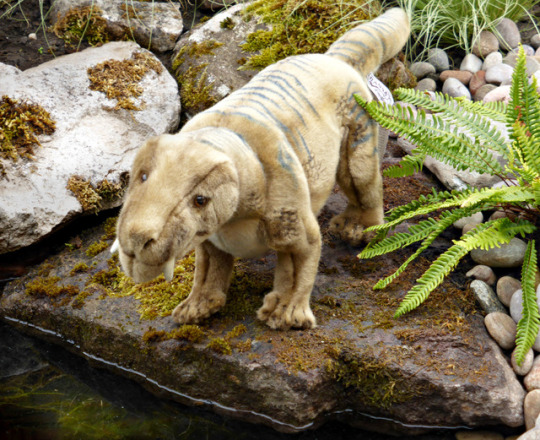
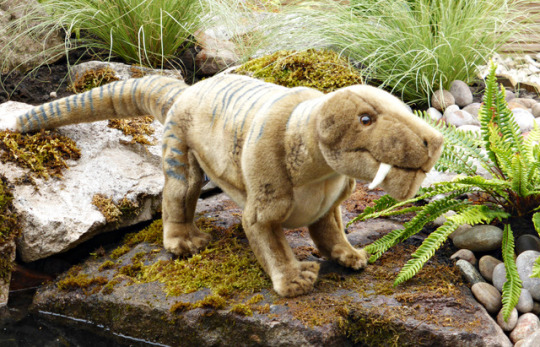
Plushie Inostrancevia alexandri by Hansa now available over at http://www.palaeoplushies.com
I'm really pleased to be able to stock some of Hansa's lovely plush toys, I believe I'm the first outside of Australia to offer this gorgonopsid up for sale!
828 notes
·
View notes
Photo
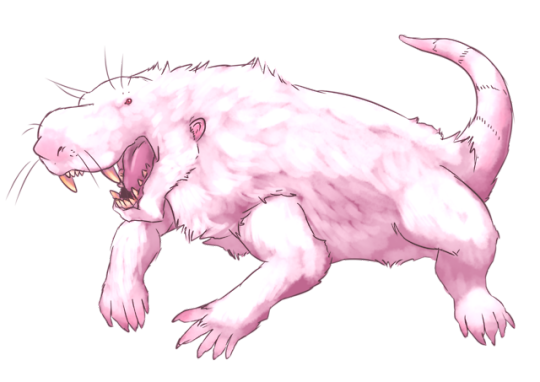
have a bear sized saber-toothed albino rat, aka a really inaccurate inostrancevia alexandri
23 notes
·
View notes